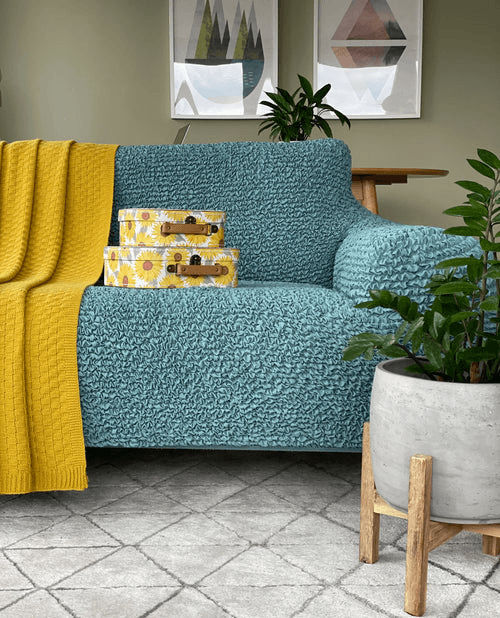It is common for many to throw away outdated furniture instead of finding ways to make it stylish and useful again. This approach is not only bad for the environment but also for your wallet. Imagine a stunning sofa that’s still in perfect working condition but has lost its visual appeal over time. While some might consider parting ways with it, what if we told you there’s a simple solution? With just a few minutes of your time, you can refresh its appearance using one of the stylish West Elm couch covers — and it’ll look as good as new!
Upgrading old furniture is a great way to save money and, more importantly, make a more sustainable choice. No wonder the upcycling movement is actively gaining popularity, with various DIY guides available online for you to follow. So, let’s dive into the world of upcycling and get inspired for your future projects!
1. Current Trends in Furniture Upcycling
Being sustainable isn’t just a necessity — it’s a trend! Repurposing and refurbishing old pieces are integral parts of this movement. Alongside the focus on prolonging the life of existing furniture in interior design, there’s a growing tendency to thrift and upgrade, particularly vintage finds. By doing so, you give second chances to pieces that were almost forgotten, while bringing their unique character and charm to your home. Living in the tech era, it’s not surprising that many also integrate technological elements, such as LED lighting or built-in charging stations. As you can see, the approaches are very diverse.
2. The Art of Revitalizing Old Pieces
Reviving old furniture isn’t as daunting as it might seem at first. In fact, you’ll probably find this process meditative and even engaging, just like many other recycling enthusiasts do. Let’s take a closer look at how you can breathe new life into your old pieces:
- Clean. Start with a dry cloth to remove dust, then follow up with a gentle cleaner to get rid of dirt and grime. Even just a simple cleaning can give your furniture a refreshed and decent look.
- Repair. If there are any broken or damaged parts, holes, or loose joints, make sure to repair, replace, patch, and fix them before focusing on the visual appeal of a piece.
- Refinish. Give your furniture piece a fresh finish. Polish metal parts, sand down wood units for further stain or finish applying, as well as cover worn surfaces with new paint where necessary.
- Customize. Personalize your furniture pieces by adding embellishments, textures, and patterns to match your style and preferences.
3. Choosing the Right Furniture for Upcycling
When looking for a piece that can be upcycled, visual appeal is not the only factor to consider. Make sure the furniture unit is rock-solid and shows no signs of structural damage, extensive water damage, or infestations. Ideally, the piece should be made of sturdy wood or metal. Minor scratches are normal, but steer clear of major issues like wobbly joints or broken legs, as repairs can be quite costly and time-consuming.
4. Choosing Fabrics and Colors: Aesthetic Considerations
The furniture’s size and shape play a crucial role in your upcycling journey. It is not only important to know how much fabric and other materials you need, but also whether your choice will actually suit your furniture piece. Thus, for example, it’s better to avoid intricate patterns if you have a small stool or ottoman, as it may overwhelm its appearance.
The style of the room also matters. Consider the overall color scheme when choosing upholstery, slipcovers, or paint for your furniture unit. Try mixing and matching different materials, patterns, textures, and colors to create contrast and add depth to the space. It can be wood and metal, velvet and leather, stripes and florals. Ultimately, choose combinations that speak to you and fit your space perfectly.
Also Read: Stylish Captions For Home Interior Designs
5. Tools and Materials Needed for Furniture Makeovers
No matter how difficult or simple your furniture upcycling plan is, always prioritize your safety by wearing gloves, safety glasses, and a dust mask. Here’s your basic guide to what you need to get started:
- Tools: Screwdrivers (Phillips and flathead), claw hammer for removing nails and tacks, pliers, utility knife, sandpaper in various grits to smooth rough surfaces, putty knife or scraper, tape measure, paint brushes, rollers, as well as drop cloths to protect your work area from spills and dust.
- Materials: Cleaning supplies, wood filler or putty, wood glue, paint, primer, stain or finish, upholstery fabric if needed.
With proper tools, quality materials, sturdy furniture construction, a spark of creativity, and a dash of dedication, you are destined to turn an old piece into something magnificent and unique. So don’t hesitate — grab your hammer, channel your inner artist, and get ready to upcycle!






